#Art Spiegelman's Co-Mix: A Retrospective
Photo
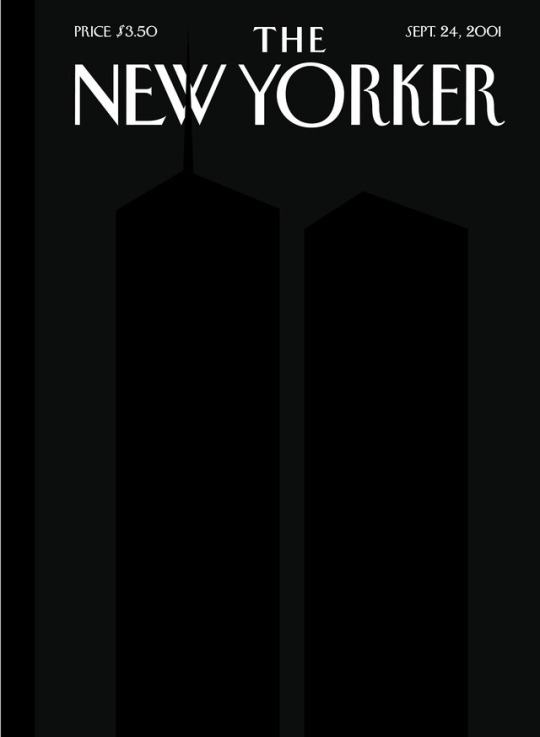
On September 11, we remember American comic artist Art Spiegelman's cover for the New Yorker. On September 11, 2001, Spiegelman witnessed the first plane crash into the World Trade Center and conceived of this cover idea: black skyscrapers against an almost equally black sky—an image that evoked the mournful, shocked mood experienced by New Yorkers and the wider world. This cover and Spiegelman's autobiographical account In the Shadow of No Towers were part of Art Spiegelman's Co-Mix: A Retrospective presented at the Jewish Museum in 2013.
64 notes
·
View notes
Text
Works
List of Books by Art Spiegelman
Maus: A Survivor's Tale : My Father Bleeds History
Art Spiegelman
Maus II: And Here My Troubles Began
The Complete Maus
In the Shadow of No Towers
MetaMaus: A Look Inside a Modern Classic, Maus
Jack and the Box
Breakdowns: Portrait of the Artist as a Young %@&*!
Open Me...I'm a Dog
Little Lit: Folklore & Fairy Tale Funnies
Garbage Pail Kids
Little Lit: It Was a Dark and Silly Night...
Jack Cole and Plastic Man: Forms Stretched to Their Limits
The New Yorker Visits the Guggenheim
Co-Mix: A Retrospective of Comics, Graphics, and Scraps
Raw Volume 2 Number 2: Required
To Laugh That We May Not Weep: The Life And Art Of Art Young
Occupy Comics
witzend
Pen & Ink
Best Of Witzend
Art Spiegelman: Comix, Essays, Graphics and Scraps: From Maus to Now to MAUS to Now
Holocaust As Subject
Read Yourself Raw
Küsse aus New York: Titelbilder und Zeichnungen für den New Yorker
The Comics Journal Special Edition: Winter 2004: Four Generations of Cartoonists
Be a Nose!
-HB
Source:
https://www.thriftbooks.com/a/art-spiegelman/198799/
0 notes
Text
PORTFOLIO
AS AN AUTHOR:
Breakdowns: From Maus to Now, an Anthology of Strips (1977) (Otherwise known as just “Breakdowns”)
Made between 1972 and 1977: a bunch of short underground comic strips, largely experimental. Contained some autobiographical strips as well.
Maus (1991)
Spiegelman’s first published graphic novel, depicting Art interviewing his father about his experience surviving the Holocaust.
The Wild Party (1994)
“A hard-boiled tragedy told in syncopated rhyming couplets telling a story of one night of debauchery that has been called repulsive, fascinating, vicious, vivacious and unremittingly powerful.”
Open Me, I’m A Dog (1995)
Art’s first children’s book, a dog is transformed into a book by a wizard. The “book” slowly attempts to get back to the way he was – a dog.
Jack Cole and Plastic Man: Forms Stretched to Their Limits (2001)
Follows the adventure of “Plastic Man”; he has immense energy, boyishness, and flexibility with a humor that leans towards the sexual.
In the Shadow of No Towers (2004)
A comic strip that evolved from Spiegelman’s experiences during 9/11; “therapy” for PTSD that he suffered from the terrorist attacks.
Breakdowns: Portrait of the Artist as a Young %@&! (2008)
Expanded from the original – made use of a swirl motif; used in a variety of context like surprise.
Jack and the Box (2008)
Another children’s book; Jack, a rabbit gets a new toy – as the story goes on, the box reveals a bunch of scary and silly objects and characters.
Be a Nose (2009)
N/A.
MetaMaus (2011)
Seen as an add-on to the Complete Edition of Maus, contains more “behind-the-scenes” – like sketches, interviews, artwork, photographs and more.
Co-Mix: A Retrospective of Comics, Graphics, and Scraps (2013)
A career overview of Art’s comprehensive comic career.
AS AN EDITOR:
Short Order Comix (1972-74)
A two issue comic that featured some of Art’s work, including one on the topic of his mother’s suicide.
Whole Grains: A Book of Quotations (Co-Edited with Bob Schneider) (1973)
Pornographic and psychedelic book of quotations, dedicated to his mother.
Arcade (Co-Edited with Bill Griffith) (1975-76)
A magazine-sized comic’s anthology that was created to showcase the work of underground artists.
Raw (Co-Edited with Francoise Mouly) (1980-81)
A graphix magazine, contained work from various artists from the unknown to the famous – aimed at an adult audience.
City of Glass (1994)
A graphic novel following Daniel Quinn, a private detective who discovers things about identity, language and human nature.
The Narrative Corpse (1995)
A major comic chain by 69 all-star cartoonists; one artist would start with three panels and pass it onto the next, continuing the novel as he/she wants and passes onto the next - until the final product is created.
Little Lit (Co-Edited with Francoise Mouly) (2000-03)
A collection of comics created for mostly for children – contained many different cartoonists; some of Raw’s most notable artists.
The TOON Treasury of Classic Children’s Comics (Co-Edited with Francoise Mouly) (2009)
A giant collection of the best children’s comics – carefully selected by Art Spiegelman and Francoise Mouly.
Lynd Ward: Six Novels in Woodcuts (2010)
N/A.
Posted by EVAN
0 notes
Text
Maus: Media Appearances
In another interview, Art Spiegelman talked to reporter Chris Mautner, from The Comics Journal, about MetaMaus and his reasons for revealing much of the “behind-the-scenes” for Maus. MetaMaus is a book which Spiegelman wrote in order to answer many of the frequently asked questions about his book, Maus, and also mentions the struggles of writing and getting the book published.
With the release and insane popularity of Maus, Art Spiegelman has made many media appearances through interviews and even art exhibits. In his interview with The Observer, Spiegelman talked about his new book, MetaMaus, a book which goes through some of the processes and hardships he went through to create Maus. The interview also mentions how the unexpected success of Maus I made Spiegelman uneasy and he was unsure if he would be able to produce the second volume of Maus. “‘I think that the shock of being celebrated, rewarded for depicting so much death, gave me the bends…’” (Cooke, 2011).
In more recent years, the Art Gallery of Ontario (AGO) put up an exhibition of Spiegelman’s works. It was called Art Spiegelman’s CO-MIX: A Retrospective, and the exhibition ran from December, 20th, 2014 to March, 4th, 2015. The exhibition was meant to highlight Spiegelman's career as a comic artist and also to emphasize his belief that comics can be a method for personal expression. The National was able to get an interview with Art Spiegelman while touring the art exhibit.
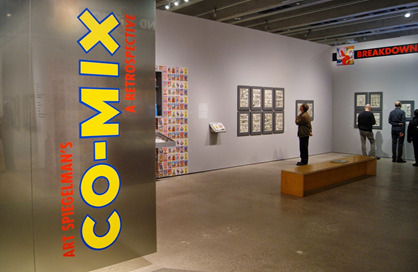
In another interview, Art Spiegelman talked to reporter Chris Mautner, from The Comics Journal, about MetaMaus and his reasons for revealing much of the “behind-the-scenes” for Maus. MetaMaus is a book which Spiegelman wrote in order to answer many of the frequently asked questions about his book, Maus, and also mentions the struggles of writing and getting the book published.
1 note
·
View note
Photo
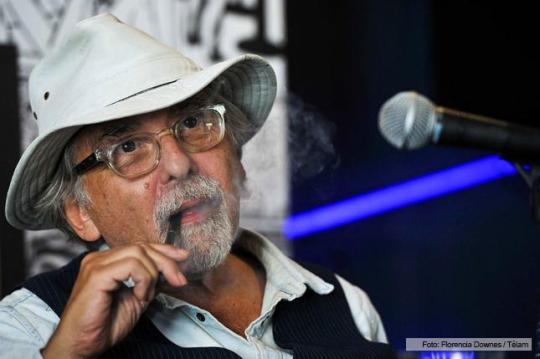
Click to read the full interview with Art Spiegelman about the origins of WORDLESS! and the show in Buenos Aires.
#comix#art spiegelman#Art Spiegelman's Co-Mix: A Retrospective#Phillip Johnston#phillipjohnston#artspiegelman#wordless#moving pictures#graphic novels#live band#Si Lewen#milt gross#frans masereel#HM Bateman#lynd ward#otto nuckel#Shaping Thought
4 notes
·
View notes
Text
MEDIA APPEARANCE
Many of Art Spiegelman’s pieces were featured on the front page of The New Yorker. One of the most well known ones is the cover he made immediately after the collapse of the twin towers on 9/11. “The cover was a black-on-black cover that looked pretty much just blank until you saw it in a certain light, at which point you could see the phantom limb — the ghost — of the towers that had just fallen. And the only clue is a pierced black area in part of the logo of The New Yorker.”

Another one is his first and more famous covers called “Valentine's Day”. A picture of a black West Indian woman and a Hasidic man kissing.
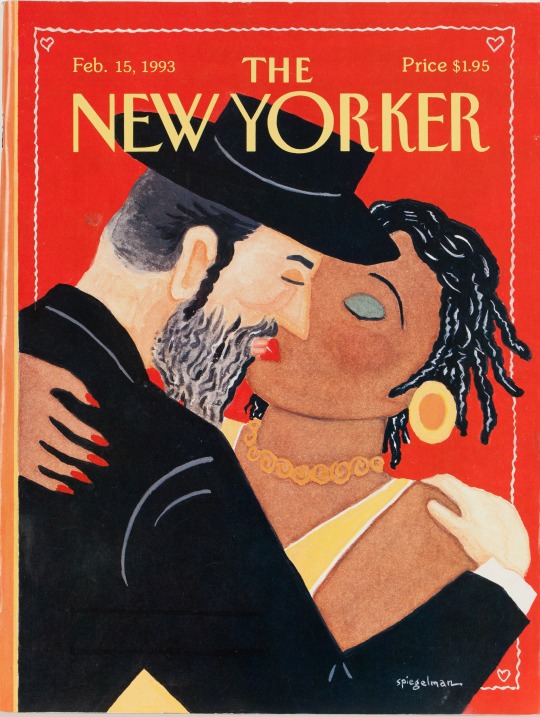
When asked about the story behind this cover, Spiegelman said, “It was in the beginnings of my life at The New Yorker, and I was trying to figure out what I might do. At that time, I was looking at Eustace Tilley, the guy with the monocle and the top hat — the dandy, the fop — and just doodling him, then going, "Wonder what he'd look like if he was Jewish." And that began to turn into that image. And what was on my mind still were the, for months and months before, the violence that erupted in Crown Heights (in Brooklyn) between the Hasidic community and the black community — the kind of race riot that happened. I was thinking, "You know, they should just kiss and make up." And the fact that it dealt with something charged was explosive at that moment. It was so different than what had come before in the magazine's history.”
Spiegelman’s work made another appearance later on at the Vancouver Art Gallery in 2013. Scraps of his comics and artworks were featured in an exhibition called “CO-MIX: A Retrospective of Comics, Graphics and Scraps”, the first exhibition entirely dedicated to the works of Art Spiegelman.
youtube
Posted by ABROO
REFERENCES
Art Spiegelman talks to John Seigenthaler. (n.d.). Retrieved July 29, 2017, from http://america.aljazeera.com/watch/shows/talk-to-al-jazeera/interviews-and-more/2014/2/20/art-spiegelman-talkstojohnseigenthaler.html
Past Exhibitions. (n.d.). Retrieved July 29, 2017, from http://www.vanartgallery.bc.ca/the_exhibitions/exhibit_co-mix.html
The Greatness of Art Spiegelman’s ‘New Yorker’ Cover Art. (2013, September 18). Retrieved July 29, 2017, from http://flavorwire.com/415850/the-greatness-of-art-spiegelmans-new-yorker-cover-art
0 notes
Video
youtube
The official trailer for "WORDLESS!" Here's your sneak peek of the show.
#wordless#artspiegelman#Art Spiegelman's Co-Mix: A Retrospective#art spiegelman#Phillip Johnston#BAM#bam opera house#frans masereel#woodcut#graphic novel#live music#live show#lecture#university of chicago#Colorado College#maus#HM Bateman#H.M. BATEMAN#lynd ward#otto nuckel#milt gross#Si Lewen#intellectual#vaudeville#show
81 notes
·
View notes
Photo


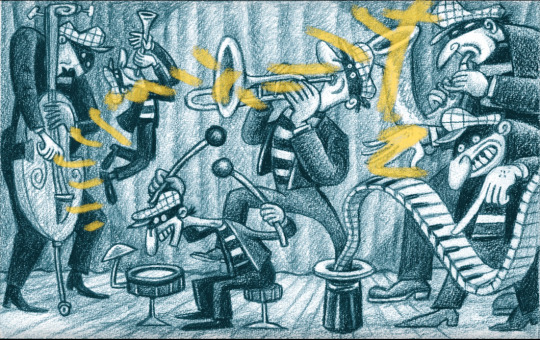
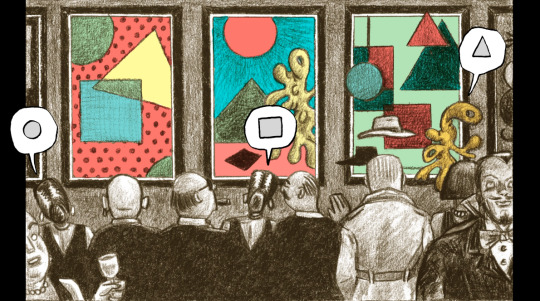
Shaping Thought! a new piece from Art Spiegelman, featured in WORDLESS!
#wordless#Art Spiegelman's Co-Mix: A Retrospective#art spiegelman#BAM#bam opera house#Colorado College#university of chicago#Phillip Johnston#live music#live show#lecture#comics#graphic novel#woodcut#Shaping Thought#new work#maus
190 notes
·
View notes
Photo



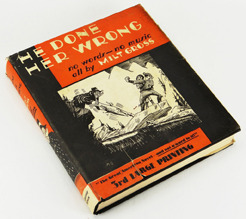
Work from Milt Gross, He Done Her Wrong, featured in WORDLESS!
© 1930 Milt Gross
Courtesy of Joan Optican Herman
#milt gross#he done her wrong#no words#Art Spiegelman's Co-Mix: A Retrospective#art spiegelman#Phillip Johnston#bam#wordless#bam opera house#performance#Colorado College#university of chicago#comics#old comics#slapstick#black and white#b & w#funnies
10 notes
·
View notes
Audio
The Leonard Lopate Show
Art Spiegelman at the Jewish Museum and BAM
Art Spiegelman talks about the exhibition “Co-Mix: A Retrospective” at The Jewish Museum, which celebrates his career and work. It's the first U.S. retrospective that spans Spiegelman’s career: from his early days in underground “comix” to the genesis of Maus to his provocative covers for The New Yorker to his artistic collaborations. He also talks about “Wordless” at BAM, an innovative hybrid of slides, talk, and musical performance created in collaboration with acclaimed jazz composer Phillip Johnston.
Full page HERE
#leonard lopate show#Art Spiegelman's Co-Mix: A Retrospective#art spiegelman#Jewish Museum#wnyc#wnycradiolab#leonard lopate#Nyc#BAM#bam opera house#wordless#Phillip Johnston#radio#interview#talk#musical performance#retrospective
5 notes
·
View notes
Video
youtube
Life after Maus, with Art Spiegelman
original article and video HERE
#Art Spiegelman's Co-Mix: A Retrospective#art#art spiegelman#maus#wordless#bam opera house#Sydney Opera House#Phillip Johnston#phillipjohnston#interview#australia#comics#comic books#graphic novel#performance
10 notes
·
View notes
Text
What exactly is WORDLESS?
A great review with some more detail about the show from the John Shand | Music & Other Spheres.
"Working loosely chronologically (with inevitable convolutions), Spiegelman began with an AB Frost piece depicting the manic antics of a cat that eats rat poison, echoed by equally manic music. Moody expressionism came oozing like sap from the woodcuts of Belgium’s Franz Masareel (whose sense of humour, Spiegelman pointed out, could be as wooden as his medium).
From Masareel we bounced to The Boy Who Breathed on the Glass at the British Museum by British cartoonist HM Bateman, a tale of tyrannical authority jostled along by Johnston’s take on classic jazz.
Spiegelman shoehorned in his salacious Shaggy Dog Story, with suitably cheesy music, and another of his, styled after Masareel, had an artist create a naked woman who resisted society’s zeal to cover her up. Bustling music coloured Masareel’s own The City, with especially vibrant baritone saxophone. Lynd Ward’s shimmering 1929 woodcut novel God’s Mandepicted darkness and despair, illuminated by music including a blustery trombone solo. Even more confronting was Otto Nuckel’s Destiny, Johnston setting bluesy music to vivid images telling a dark tale of loneliness, poverty and anguish. Standing out was Si Lewen’s 1957 The Parade, carrying echoes of the most troubling work of Goya and Picasso, with equally compelling music.
The interaction with the music peaked on Spiegelman’s Shaping Thought, one image of which showed a sextet of Johnston’s instrumentation, with ribbon’s of colour spiralling from each instrument in turn as they featured. Besides Johnston’s soprano saxophone the perfectly-cast band consisted of Paul Cutlan’s baritone, James Greening’s trombone, Peter Dasent’s piano, Lloyd Swanton’s bass and Nic Cecire’s drums."
Full article here: http://www.johnshand.com.au/wordless/
#wordless#artspiegelman#Art Spiegelman's Co-Mix: A Retrospective#art spiegelman#Phillip Johnston#phillipjohnston#live music#live show#BAM#bam opera house#HM Bateman#sydney opera house#review#comics#comic books
1 note
·
View note
Video
youtube
#Art#Art Spiegelman's Co-Mix: A Retrospective#art spiegelman#phillip johnston#frans masereel#otto nuckel#lynd ward#hm bateman#H.M. Bateman#milt gross#si lewen#bam#bam opera house#Shaping Thought#jewish museum#co-mix#live music#live show#one night only#sextet#comics#comic books#comic art#maus#wordless#woodcut#wordless novels#passions of a man#wild pilgrimage#gods man
9 notes
·
View notes